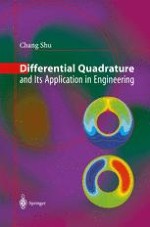2000 | Buch
Über dieses Buch
In the past few years, the differential quadrature method has been applied extensively in engineering. This book, aimed primarily at practising engineers, scientists and graduate students, gives a systematic description of the mathematical fundamentals of differential quadrature and its detailed implementation in solving Helmholtz problems and problems of flow, structure and vibration. Differential quadrature provides a global approach to numerical discretization, which approximates the derivatives by a linear weighted sum of all the functional values in the whole domain. Following the analysis of function approximation and the analysis of a linear vector space, it is shown in the book that the weighting coefficients of the polynomial-based, Fourier expansion-based, and exponential-based differential quadrature methods can be computed explicitly. It is also demonstrated that the polynomial-based differential quadrature method is equivalent to the highest-order finite difference scheme. Furthermore, the relationship between differential quadrature and conventional spectral collocation is analysed.
The book contains material on:
- Linear Vector Space Analysis and the Approximation of a Function;
- Polynomial-, Fourier Expansion- and Exponential-based Differential Quadrature;
- Differential Quadrature Weighting Coefficient Matrices;
- Solution of Differential Quadrature-resultant Equations;
- The Solution of Incompressible Navier-Stokes and Helmholtz Equations;
- Structural and Vibrational Analysis Applications;
- Generalized Integral Quadrature and its Application in the Solution of Boundary Layer Equations.
Three FORTRAN programs for simulation of driven cavity flow, vibration analysis of plate and Helmholtz eigenvalue problems respectively, are appended. These sample programs should give the reader a better understanding of differential quadrature and can easily be modified to solve the readers own engineering problems.
Anzeige
